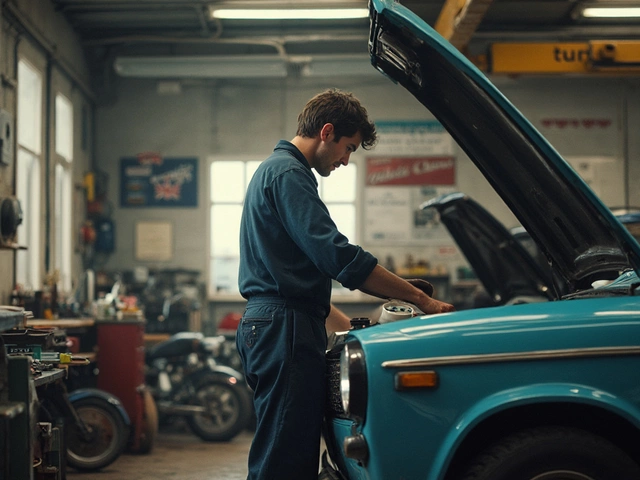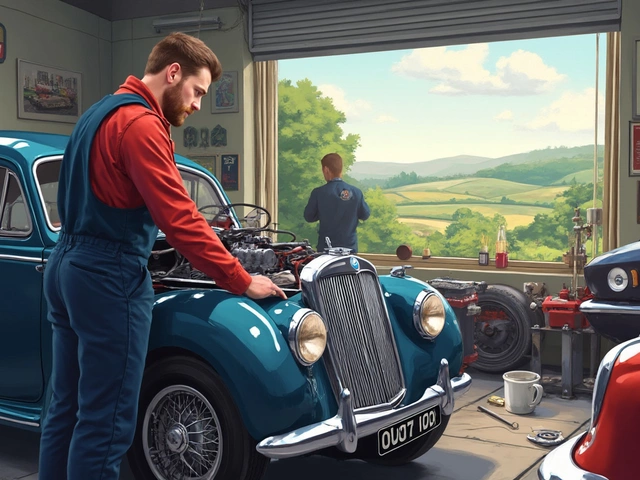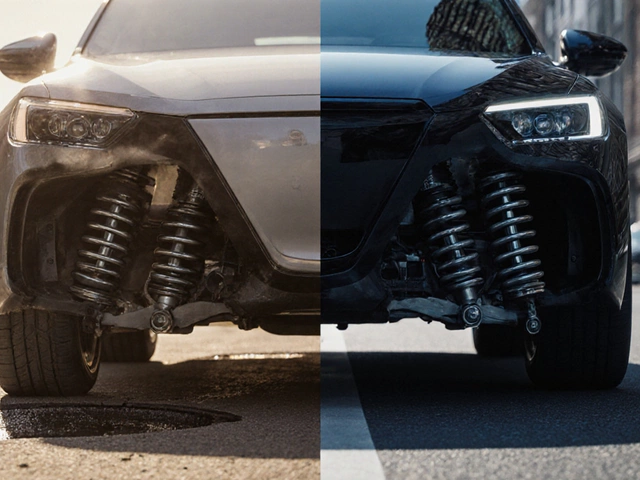Car Cooling System: Keep Your Engine From Overheating
Ever wonder why your temperature gauge jumps on a hot day? That’s your car’s cooling system screaming for help. It’s not magic – it’s a few parts working together to move heat away from the engine. When they’re clean and filled right, you’ll never feel that dreaded steam‑rise.
The heart of the system is the radiator. It’s a metal box full of thin tubes and fins that spread hot coolant so air can cool it down. The coolant itself is a mix of water and antifreeze. Water grabs the heat, antifreeze stops it from freezing in winter and raises the boiling point so the liquid stays liquid when the engine gets hot.
Key Parts and What They Do
Thermostat watches the engine’s temperature. When the engine is cold, it stays closed so the coolant circulates only inside the engine, helping it warm up quickly. Once the right temperature is reached, the thermostat opens, letting hot coolant flow to the radiator.
Water pump is the engine’s circulatory system. It pushes coolant through the engine and then to the radiator. If the pump fails, heat builds up fast and you’ll see the temperature gauge spike.
Radiator fan kicks in when airflow isn’t enough – like in stop‑and‑go traffic or on a slow climb. The fan draws air through the radiator fins, speeding up cooling.
Hoses and clamps carry the liquid between the engine, thermostat, and radiator. Look for cracks, bulges, or loose clamps; a tiny leak can turn into a big overheating problem.
Quick Checks Before You Hit the Road
1. Coolant level – Open the coolant reservoir (never the radiator when hot) and make sure the fluid is between the “min” and “max” marks. Top it up with the right mix if it’s low.
2. Coolant condition – Fresh coolant is bright green, orange, or pink and clear. If it looks rusty, cloudy, or has oil floating on top, it’s time for a flush.
3. Radiator cap – A bad cap can’t hold pressure, lowering the boiling point of the coolant. Press the cap down; it should pop up with a firm click.
4. Leaks – After a drive, park on a clean surface and look for colored spots. Small drips often mean a hose or gasket needs replacing.
5. Fan operation – Turn the ignition on, let the engine warm up, then watch the fan. It should spin up once the engine reaches about 90°C.
Common Cooling Problems and Easy Fixes
Overheating while stopped usually points to a fan issue or low coolant. Check the fan fuse and wiring, then top up the fluid.
Steam from the engine bay can mean a cracked hose or a leaking radiator. Replace the damaged part and refill the system.
Sweet smell is coolant leaking onto hot engine parts. Follow the smell to the source and tighten or replace the hose.
If you ever see the temperature gauge in the red, pull over safely, turn off the engine, and let it cool for at least 15 minutes before checking the coolant.
Maintenance Tips to Extend Lifespan
Schedule a coolant flush every 2‑3 years or as your owner’s manual says. Flushing removes rust and old antifreeze, keeping the system efficient.
Replace the thermostat every 5‑7 years, especially if you notice temperature swings.
Inspect belts that drive the water pump and fan. A worn belt can slip and stop the pump from circulating coolant.
When you’re buying a new car, look for a cooling system with an electric water pump and active fan control – they’re more reliable and adjust better to traffic conditions.
By keeping an eye on these simple things, you’ll avoid costly repairs and stay safe on the road. If anything feels off, don’t guess – let a professional at Northwich Tyres Centre check it out. We’ve got the tools and expertise to keep your cooling system running smooth all year long.
 23 July 2025
23 July 2025
How Many Miles Do Car Radiators Last? Lifespan, Maintenance & Replacement Tips
Wondering how many miles car radiators last? Learn about radiator lifespans, factors shortening the duration, and smart ways to keep your cooling system healthy.
 7 July 2025
7 July 2025
Car Radiator Costs Explained: How Pricey Are Replacements in 2025?
Are car radiators expensive in 2025? Find fresh insights on replacement costs, why they're rising, and tricks for saving money on your next repair.
 9 March 2025
9 March 2025
Is Replacing Car Radiators Really Worth It?
Replacing a car radiator can seem daunting, but it might be necessary for optimal vehicle performance. This article explores the importance of car radiators, signs it's time for a replacement, and offers practical tips for maintaining your vehicle's cooling system. Discover what factors influence the cost and availability of radiators, plus learn some handy DIY advice for those considering tackling the job themselves. We aim to help you decide if radiator replacement is the right choice for you.






0